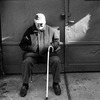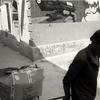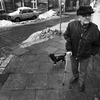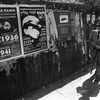Witkacy: Early Life
'It you take into account that this 'author' is eight years old, you've got to admit that he's got talent! Lope de Vega wrote his first play when he was ten - Stas was seven and a half when he began. If he keeps on at this rate and continues to write as much, then undoubtedly his works will be numbered in the thousands.'
Thus wrote Stanislas Witkiewicz, the leading Polish artist and critic, about his young son in 1893. As it was, the father's hopes were well-founded, and Stas, later known as 'Witkacy' to his friends, was to a leave a remarkable legacy.
Witkacy indeed had many strings to his bow - painting, writing, photography and even philosophy. Yet whilst he shone in a number of fields, his was far from a straightforward story of success. And as has so often been the case with innovative artists, he was largely misunderstood by his own generation, being regarded as the wildcat, eccentric son of an eminently more distinguished father. The dramatic way in which he departed from this world - on the eve of war in 1939 - served to stoke the legend, whilst also detracting from the calibre of his work itself.
Witkacy's legacy is unassailable in today's Poland. However, barring his photography (which he regarded more as an amusing and diverting hobby) he remains relatively unknown in the West. However, as the big auction houses begin to root around in the untapped lands of the east, it is likely that his talents will soon be known to wider audiences. Indeed, his larger than life persona and wild exploits seem tailor-made for the customary cult-of-the-artist type treatment. He would probably have enjoyed all the attention, just as he would the surreal farce of his funeral, which finally took place in 1988 in Zakopane's magical Old Graveyard.
Early Life: Warsaw and Zakopane
Witkacy was born Stanislas Ignacy Witkiewicz in Russian occupied Warsaw in 1885. His father, also Stanislas,
was an impoverished member of the Polish gentry. Like so many of their peers, the family had been deprived of their estates following the failed January Uprising of 1863. They spent six years in exile in Siberia while Stanislas Senior was a young boy, before eventually returning to the Polish lands in 1871.
An impassioned and gifted young man, Stanislas Senior made his career in the arts, both as a painter, with his sharply observed naturalistic landscapes, and, more successfully, as a critic. However, it was as the creator of the Zakopane style (a patriotic national style of architecture inspired by folk models) in which one finds his most intriguing legacy.
Witkiewicz moved to Zakopane in 1890. This small highland town was considered the 'spiritual capital' of Poland. It was a retreat for artists and intellectuals, far away from repressive Russian Warsaw and Prussian Poznan. From the 1860's onwards, the Austrians had allowed the Poles autonomy, and it was this rather complicated world that Witkacy grew up in.
From the start, Witkacy was bound on an unusual trajectory. For one his father was staunchly anti-institutional. He abhorred schools, believing them to stifle individuality. Stanislas would not explicitly tell his son to read a certain book or learn a certain theory, rather he encouraged the boy to strive in the directions that pulled him.
The house itself was something of a living theatre, and his father always had a host of projects on the go. The very essence of the Zakopane style was in creating an all embracing world, where the furniture, as well as the architecture, expressed his folk-inspired principles. Besides being a professional painter, Stanislas Senior was a keen devotee of the new art of photography, and all the family enjoyed experimenting with this new and exciting gadget. His wife, Maria, was a music teacher and she taught piano lessons from home. Art was as much a part of family life as was eating dinner or going to sleep.
Much of what Witkacy learnt as a young boy was from his father's famous friends. Stanislas was careful to introduce his young son to inspiring individuals, many of whom privately tutored the young boy. All kinds of colourful personalities were a part of household life - artists, philosophers, writers, as well as local legends such as the Highland minstrel Sabala, and the philanthropic Count Zamoyski.
Witkiewicz could glide easily between different worlds, and in Zakopane 'the people flocked to him as if he was a prophet'. In a letter to his son he described how class distinctions were 'nothing more than abominable, foul and dark hovels - shacks where crime breeds.' It was 'absolutely necessary to fight ruthlessly against' such distinctions, and 'to display love in its highest form towards all people - these are the guiding posts on the road upon which, when a human being walks, he will not become degraded or a fool.'
Already at a young age Witkacy was painting, playing the piano and reading widely. He was also captivated by his godmother, the legendary actress, Helena Modrzejewska, and he soon created his own miniature home theatre, giving expression to his fascination with the nuances of the spoken word.
His first play 'Cockroaches', which the eight year old described as a 'Comedy in One Act', was a telling sign of things to come. In the closing scene, a miniature pug dog enthusiastically lays waste to a plague of cockroaches (spurred on by a priest, and led by a King who swishes the insects with his sword). It is classic Witkacy, his love of the absurd in glorious abundance.
Witkiewicz Senior was delighted with the boy's progress. As he grew up, the father endeavoured to inculcate him with the sense of a profound mission: 'In intellectual concepts reach to infinity, in social ideas, go to the extremes of boundless love.'
In reality, the young Witkacy was possessed of a mischievous streak that was at odds with his father's purer character. The two were very close, but the boy often took advantage of his father, whilst as an only child exposed to such lofty concepts, the journey towards introspection became marked.
His father had been battling with tuberculosis for some years, and from 1903 he began to spend more and more time in the heath spa of Lovranno. He eventually settled there full time the following year, although he maintained a close correspondence with his son.
However, much to the father's horror, Witkacy decided to enroll in an academic institution. There was little that Stanislas Senior could do to stop his now twenty year old son.
Cracow had plenty to offer an aspiring artist at that time - a louche bohemian set, vibrant cafes and plenty of opportunities to meet amusing friends and girlfriends - these were in fact the least of his father's worries. Stanislas Senior's great concern was that his son was now going to 'conform'. Cracow had a newly founded Art Academy, run by a distinguished painter, and there he would join 'Professor Stanislawski's piglets', as the old man wrote in shock:
'What a peculiar mixture of contradictions life is, and must each new generation unfailingly be the antithesis and reaction to the previous one? Did we really battle against the servitude of the school and herd mentality in art so that you and your peers could actually feel at home in the school system?'
However, the young Witkacy was decided, and off he went to Cracow in the Autumn of 1905.

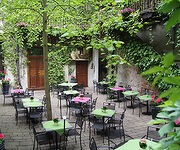 Kawaleria Szarza Smaku
Kawaleria Szarza Smaku
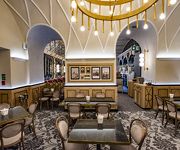 Europejska
Europejska
 Krakow Pinball Museum
Krakow Pinball Museum



